As a busy photographer who travels quite a bit both within the USA and overseas, I have gone through many types of gear in my camera bag. While some of the gear and accessories are absolute necessities I will not leave my home without, others can be very useful in particular situations or when traveling to other countries. In this article, I would like to go over my top must-have gear for travel and discuss why you might consider including them in your arsenal in the future.
Here is a full list of accessories, with appropriate links that will take you to particular section of the article:
1) Must-have Gear:
- Camera
- Lenses
- Lightweight Laptop
- Spare Camera Batteries
- Memory Cards + SD Memory Card Case
- Travel Camera Backpack
- Watch with GPS Tracking Capabilities
2) Must-have Accessories / Always In Bag:
- 4-Port USB Car Charger
- 20,000mAh Solar Charger / Battery Pack
- Nikon EN-EL 15 Dual Battery Micro USB Charger
- Portable SSD Drive
- Compact LED Flashlight
- LED Headlight
- Rainsleeve
- Rocket Blower
- Sensor Gel Stick
- Microfiber Cloth and Lens Cleaner
- Circular Filters + Step-Up Rings
3) Optional Accessories / Overseas Travel:
- USB Solar Charger
- Multi-Port USB / USB C Port Charger
- Orei World Travel Power Plug Adapter
- USB 3.0 Memory Card Reader
- Filter Set
- Travel Tripod
- Tabletop Tripod + Compact Head
- Multi Clamp Kit
- AA Rechargeable Batteries
- Unlocked Smartphone
1) Must-Have Gear
First, let’s go through gear you cannot leave your home without. These are the most essential items such as your camera, lenses, laptop, memory cards and a camera bag.
1.1) Camera
When traveling, I prefer to take a lightweight DSLR or a mirrorless camera, so that I don’t have too much weight on my shoulders. Since I am a Nikon shooter, it is either something like the Nikon D750 (for general travel) or the Nikon D810 (for landscapes).
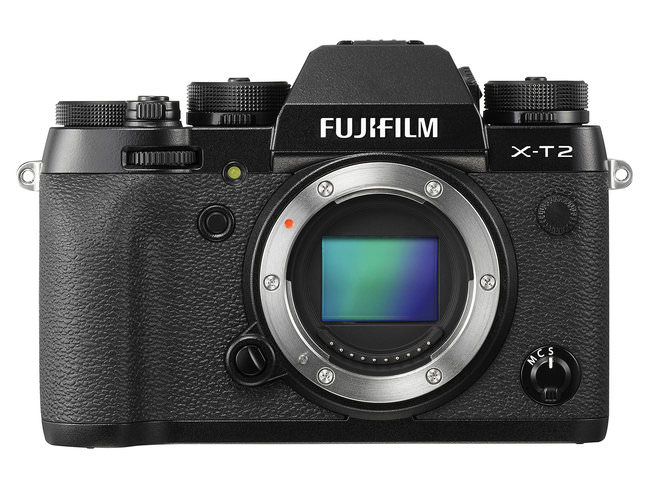
When I know that I will be carrying a lot of other weight, I prefer to go even lighter with an APS-C mirrorless camera and my choice for that would be something like the Fuji X-T2. I never take a battery grip with me when traveling, since it adds too much extra weight and takes up space in my bag. If it is an important trip overseas, I always carry a backup camera body.
1.2) Lenses
The number and types of lenses will vary greatly depending on what I am planning to shoot. For landscapes, if I go with my full-frame Nikon cameras, my typical choice is the following:
The 20mm f/1.8G is for astrophotography and when I need to go ultra-wide. The 24-120mm f/4G VR is what I have mounted on my camera 90% of the time, since it covers most situations. The 70-200mm f/4G VR is for situations where I need to zoom in on a particular subject or part of the scene. All three are lightweight lenses and cover most of my travel needs. If I plan to do street photography, I would add the lightweight Nikkor 50mm f/1.8G (Nikkor 50mm f/1.8G Review) or something similar.
When using Fuji mirrorless cameras, my choice is usually the following:
If I plan to do astrophotography, I would also grab something like the Fuji 16mm f/1.4 WR. The 50-140mm f/2.8 is a bit heavy for the setup, but necessary for telephoto shots. I hope Fuji releases a lightweight 50-140mm f/4 in the future to make it the ultimate telephoto lens for travel.
1.3) Lightweight Laptop
When traveling, I prefer taking a very lightweight laptop that I will be using for backing up images and light processing. This means that it is either going to be my Microsoft Surface Pro 3 + SD memory card reader, or my Dell XPS 13. Since the XPS 13 is a higher-end machine and it has a UHS-II compatible SD card slot, it usually ends up in my bag. My laptop charger usually ends up inside one of the compartments of the camera bag.
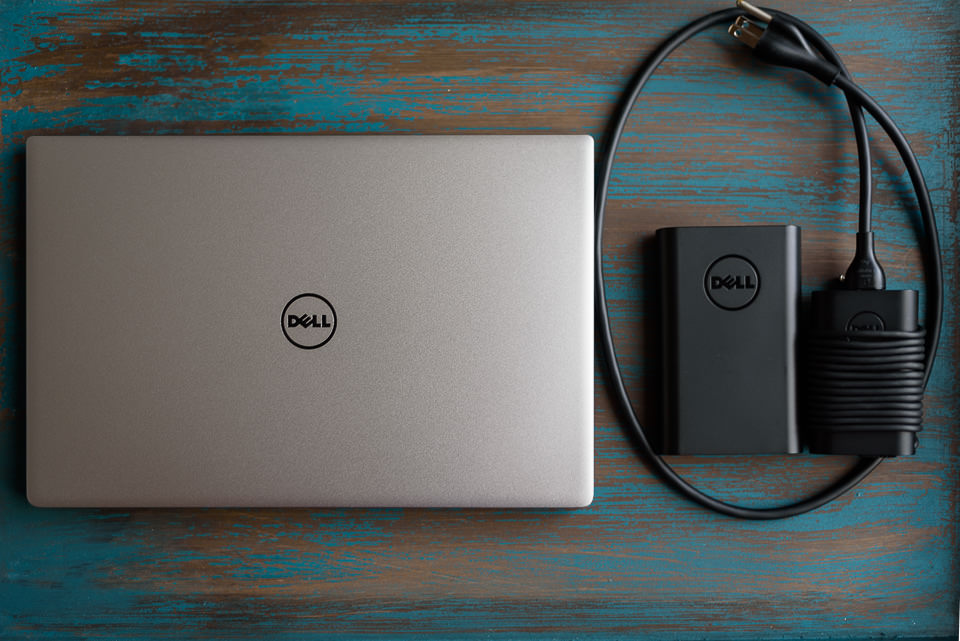
1.4) Spare Camera Batteries + Charger
This one is a given – I usually take 3-4 batteries with me and at least one charger. When traveling light, I will take 2 batteries, plus a single charger for space and weight savings.
1.5) Memory Cards + SD Memory Card Case
At this point, I have pretty much switched from CF cards to SD cards, mainly because they are easier to deal with, they are lightweight and my laptop has an SD card slot. When traveling with my Nikon D810, I now set the SD card slot as my primary storage and if I need backup storage, I will toss in a large 64 GB CF card that stays in my camera until images from the SD card are backed up. Once that’s done, I format the CF card, since it is only used as a backup.
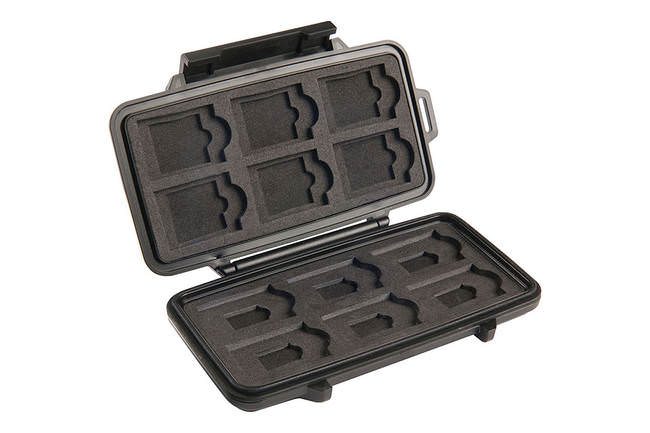
I always make sure that I take a sufficient number of SD cards for my trips, since I don’t erase any images from the SD cards until I get home (for more details, since my “how to use and care for memory cards” article). Since I use the Pelican SD memory card case for storage, I make sure to load it up with a bunch of SanDisk Extreme Pro 32 GB and 64 GB memory cards. They are very reliable memory cards and have very fast read and write speeds.
1.6) Travel Camera Backpack
While a shoulder bag might be convenient for shooting locally, you do not want one when doing heavy traveling. First, most shoulder bags cannot accommodate a lot of gear and second, once you load it all up, it will be too much weight to bear on a single shoulder. A rolling bag might be convenient to transport your gear, but it is very inconvenient when you are on your feet, especially if you need to hike. Your best bet is going to be a lightweight backpack – and you can trust me on this one, since I have tried them all.
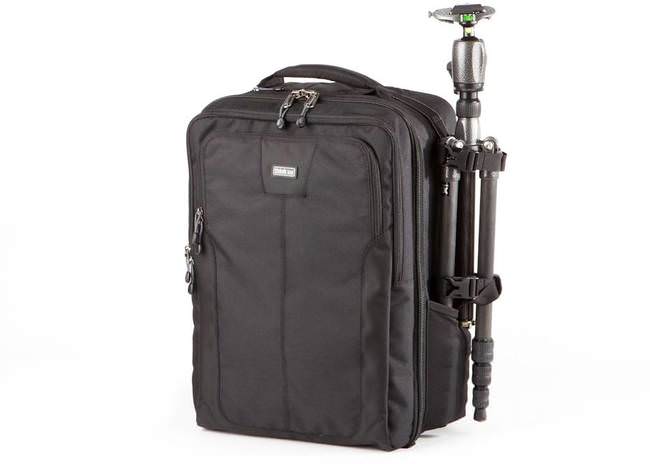
I personally went through perhaps a dozen different backpacks and I always keep coming back to the ThinkTank Airport Commuter (see our ThinkTank Airport Commuter Review), the most versatile and the most comfortable backpack out there in my opinion. I can easily fit two camera bodies, a few lenses, a laptop, chargers, cables and other accessories listed below into this bag and it just works. It has the shoulder and belt support for comfort and long travel, and I can easily keep my travel tripod on its side as well, if necessary.
Once I arrive to my location, I usually off-load all the chargers, laptop and other accessories to my hotel room or car and I only keep the gear I intend to use in the bag. This shaves a lot of weight off my shoulders and makes the backpack easy to hike with.
1.7) Watch with GPS Capabilities
After getting almost lost in a very remote area of New Mexico a few years back, I told myself that I will never leave on a trip without a GPS tracking device. It was a very scary experience and not something I wanted to go through ever again. When I got home, I bought the Garmin Fenix 3 HR, which has the capability to start navigation at the beginning of a hike, then guide me back to where I started when I want to get back.
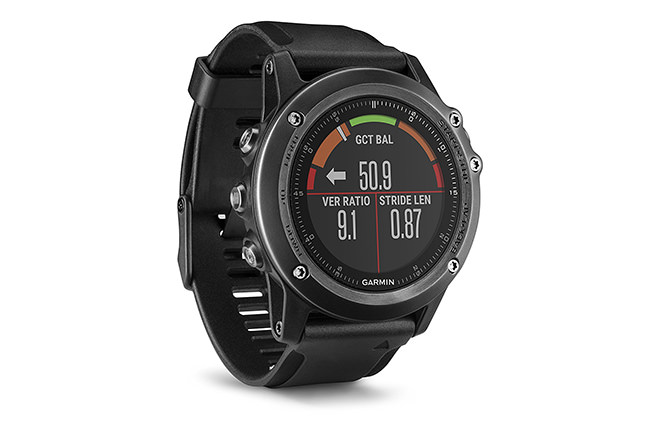
Its battery life is amazing – I usually don’t have to charge it for 2-3 weeks of lightweight use and when using the GPS, it easily lasts a week. It is a bit heavy, bulky and not very convenient to use on a daily basis (I normally don’t like wearing watches), but I bought it for the sake of safety when traveling. It has all kinds of built-in features such as compass, altimeter, barometer, etc., and has the capability to install apps, so I can install everything from tracking to weather apps. The Garmin Fenix is one of the most versatile watches on the market and its worth every penny, especially when using its GPS tracking capabilities. I have used this watch numerous times when hiking and its accuracy is superb – exactly what I need it for. If you are in the market to get this watch, you might want to check out the newer Garmin Fenix 5X – make sure that you get the one with Sapphire glass that does not easily scratch.
2) Must-Have Accessories / Always In Bag
Now that we’ve gone over the essentials, let’s talk about other accessories I will always have in my camera bag when traveling.
2.1) 4-Port USB Car Charger
When traveling, I will most likely be renting a car or traveling in my own car. Since I have a boatload of equipment that needs to be constantly charged, whether it is my phone, my camera batteries or other equipment, I need to make sure that I have a reliable power source. Every car has a cigarette lighter receptacle, but not every car is going to have a USB port that can provide sufficient power, or a built-in power inverter. For this reason, I always have a multi-slot USB charger with me when traveling.
I went through a number of cheap USB chargers in the past and none of them lasted long enough for me to recommend them. Many of them did not provide sufficient power to my devices, often taking too long to charge, or overloading when more than one device was plugged in. I ended up settling on the AUKEY 4-Port USB car charger, which has been very solid so far, providing plenty of power for up to 4 devices at a time.
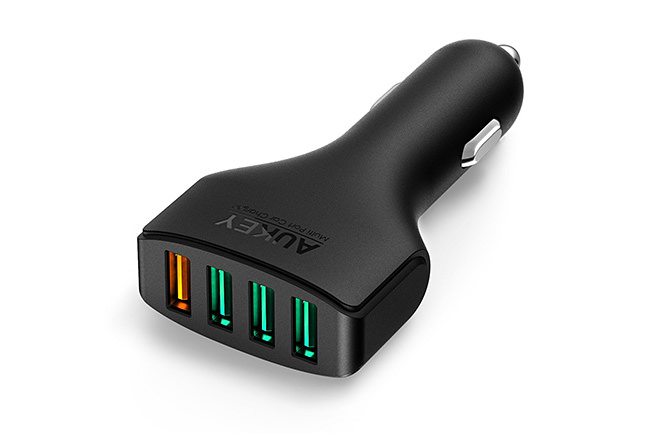
This guy is a little beast, having a single Quick Charge 3.0 port (marked yellow in the picture) and 3 AiPower adapting charging ports (marked green) with dedicated 2.4A output each. That’s quite a bit of power coming off such a small device. When traveling, I can simultaneously power a GPS unit, charge my iPhone, charge one or two camera batteries (more on this below) and have a free slot for something else. It has built-in safeguards to protect devices from overheating and excessive current, which is nice.
2.2) 20,000mAh Solar Charger / Battery Pack
I also never leave home without a charger / battery pack. If I don’t have a car to charge my devices with, a powerful battery pack can be very useful in the field to provide power to several devices such as a cellphone, camera and my GPS watch. While there are many inexpensive battery packs out there, I would recommend to get a reliable battery pack with solar panels, so that if you are left out without power, you can still take advantage of sunlight to recharge the battery pack. My personal favorite is the AUKEY 20,000mAh Solar Charger. Although it is a bit heavy at a little over a pound (around 500 grams), it has a lot of power to be able to keep my devices charged (I can fully charge my iPhone 7 Plus 4 times).
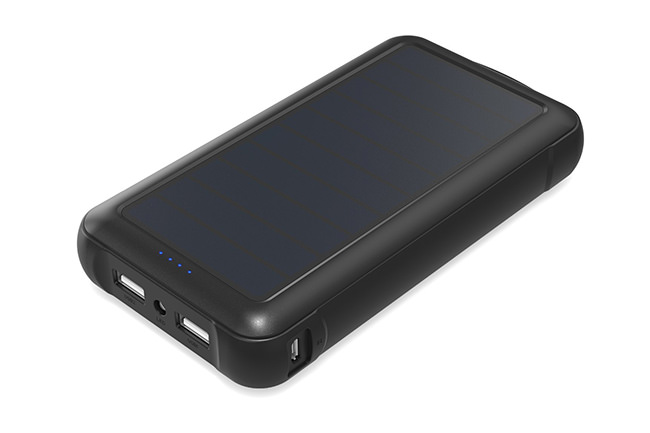
It is splashproof and it can withstand quite a bit of sunlight without melting the plastic, so you don’t have to worry about damaging it in rainy or sunny conditions (still, keep in mind that batteries don’t do well in excessive heat, so don’t leave it out in your car’s dashboard when it is baking outside). It takes a while to charge via its solar panels, so ideally, you want to charge it up via its micro USB charging port.
Aside from the above-mentioned solar charger, I also own two extra battery packs, which I sometimes take with me when traveling (not always in bag). The AUKEY 20,000mAh Portable charger is smaller and lighter than the above, but it has one advantage – it can be charged via either Micro USB input or Lightning input, so if I forget a Micro USB cable, I know that I always carry a Lightning cable with me, so I can charge my phone or the charger with the same cable. The main reason why I have a separate battery pack without solar cells, is because I would normally couple this one with a compact solar panel with me, so that I can keep two battery packs constantly charging if I need to.
If I need even more juice, the AUKEY 30,000mAh portable charger is a real beast. Not only because it has a lot of power, but also because it can charge pretty much any device, including the latest generation Apple MacBook / MacBook Pro through its USB C port. While it might not last long to charge up a busy MacBook Pro with Lightroom running, if you happen to run out of battery and you need to get your laptop up and running, this guy will do the job. Keep in mind that this battery pack is pretty heavy, so it might not be a good idea to take one with you when actively traveling or hiking. Also, please do not take this battery with you if you are planning to fly. 30,000mAh is over the 100Wh limit imposed by the FAA (see this PDF document for more details). For this reason, I only use this battery pack when traveling locally.
And lastly, please note that you cannot put any battery packs in your checked luggage. Always make sure that you put battery packs in your carry on bag / backpack. I have done this many times and have taken batteries up to 20,000mAh overseas without issues.
2.3) Nikon EN-EL 15 Dual Battery Micro USB Charger
If you shoot with a Nikon DSLR that takes EN-EL 15 batteries (Nikon V1 / D7000 / D7100 / D7200 / D500 / D600 / D610 / D750 / D800 / D800E / D810 / D810A) and you want to charge those batteries via Micro USB power, this is a must-have accessory! The RAVPower Nikon EN-EL 15 Dual Battery Micro USB Charger was introduced to me by my friend Tunc, who used it during our New Zealand trip. It was a life saver, because it allowed us to charge two batteries at a time via a car USB charger. And when we were in a remote area without power, we were able to charge batteries with battery packs, which is awesome!
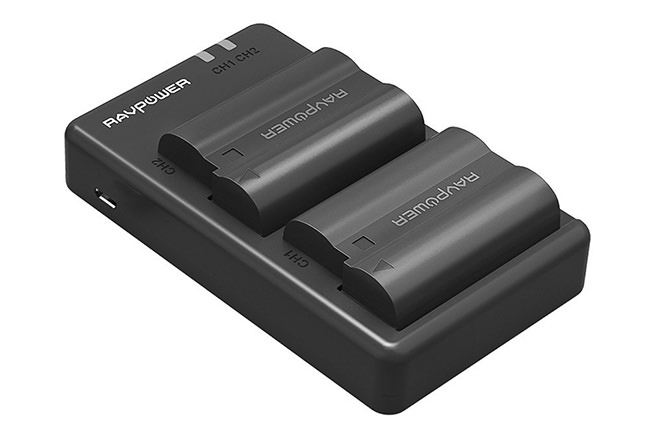
For just $40 bucks, you get this awesome charger and 2 extra EN-EL15 batteries! While the EN-EL15 batteries are third party, that’s still pretty awesome value considering that a single Nikon-branded EN-EL15 costs $50. They work just fine on my Nikon D750 and D810 DSLR cameras, so I was very happy to make this purchase.
The only downside of this charger, is that the batteries don’t lock into place when charging. So it can be a bit inconvenient when wanting to charge while moving – you will need to keep some gaffer tape with you, so that you can keep the charging batteries from moving.
2.4) Portable SSD Drive
As we have stated in our Photography Backup article, it is always a good idea to have a solid backup workflow to prevent potential for data loss. It becomes even more critical to have a good backup plan when traveling, because losing images from an expensive trip is simply not an option. Since SSD storage has gotten much more affordable in the past few years, I no longer recommend taking heavy and unreliable (especially when dropped) hard drives when traveling. My choice has been the Samsung T3 portable SSD drives, specifically the Samsung T3 1 TB Portable SSD.
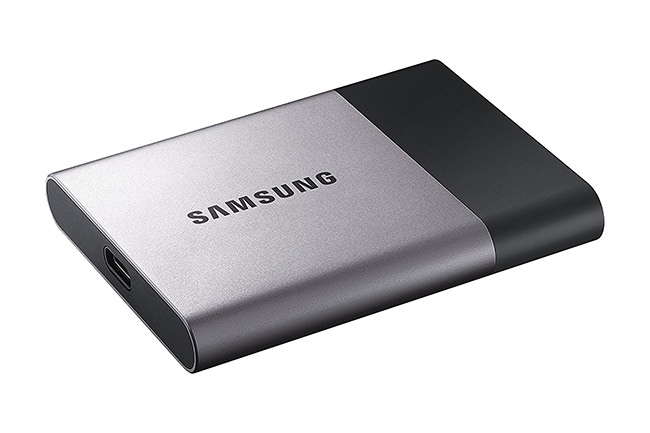
As you might have seen from my older Samsung T1 SSD review, these things are super fast, small, lightweight and reliable. I have been using mine for a few years now and it has always performed. I always keep it in one of the inner compartments of my camera bag and it is the storage I backup all the images to when traveling. Compared to the first generation T1-series, it is shock resistant, so it is a bit more durable when using in the field.
2.5) Compact LED Flashlight
A flashlight is another must-have item in your camera bag when traveling. You do not want a large and heavy flashlight, so a compact, but powerful flashlight is ideal. While there are plenty of great options out there, I personally use the fairly cheap flashlight – the J5 Tactical V1-Pro. It is very small, lightweight and packs 300 lumens of LED brightness. You will need a single AA battery to power the flashlight and you can even use a rechargeable battery if you have one. At $14 bucks, it is a cheap flashlight that works.
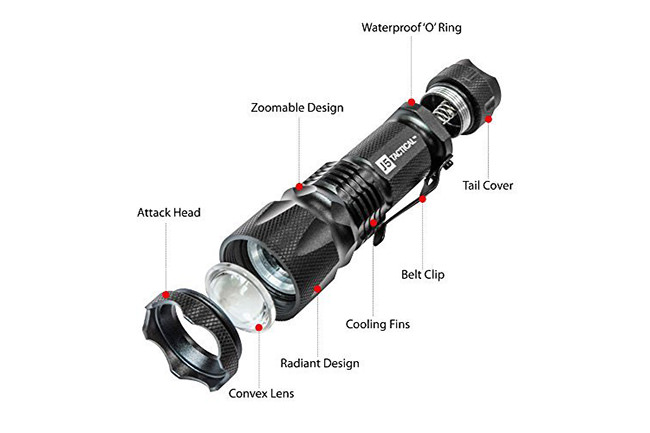
If you want an insanely bright and fancy flashlight, the Nitecore Explorer is another popular choice. This guy can output 1020 lumens, which is insane! It is noticeably larger than the J5 Tactical V1-Pro and it takes four AA batteries, making it pretty heavy as well. Unless you are into light painting, I would not bother with something like the Nitecore and stick with a small and compact flashlight.
2.6) LED Headlight
When hiking at night, I personally prefer to use an LED headlight, since it is much more convenient and it frees up your hands. While there are lots of great options for headlights out there, you always want to make sure that you get a headlight that has the capability to switch to red night vision LED, so that you are not distracting other photographers or destroying your long exposure images. Again, I prefer to go for simple, relatively inexpensive and reliable headlights like the Pelican Progear 2760. At $30 bucks, it is much cheaper than many other feature-packed headlights out there. It is also very compact, which is ideal for travel photography. You will need 3 AAA batteries to power the Pelican Progear 2760 and the batteries last a while.
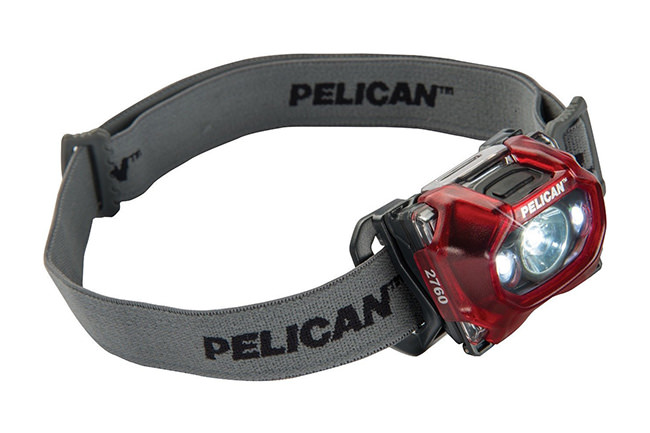
Another option, and something I have been personally using for a few years now is the LED Headlamp by Northbound Train. It is not as nice as the Pelican in terms of build quality, but it does the job. What I don’t like about it is the power button, which I managed to accidentally trigger a number of times when putting something on top of it. The power button on the Pelican’s is recessed, which reduces the chance of accidentally powering it on.
2.7) Rainsleeve
While it is nice to heave a weatherproof camera and lenses, sometimes it is necessary to protect camera gear when shooting in wet conditions. I prefer to have simple rainsleeves in my camera bag and for that, the OP/TECH Rainsleeves are ideal – they are very compact and lightweight, taking practically no space in my camera bag. Best of all, they are cheap – you get a pack of two 18″ rainsleeves at just $7 bucks.
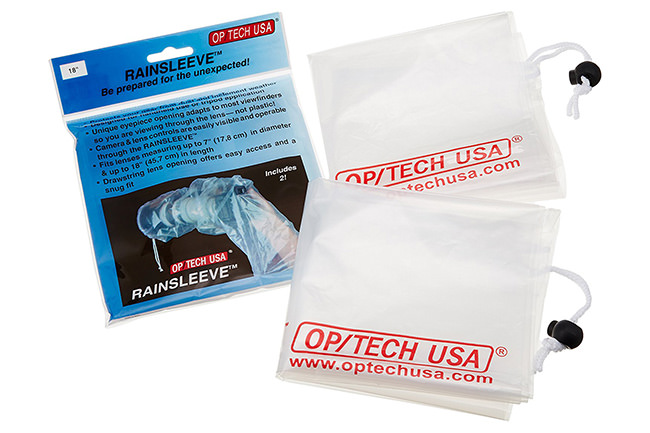
2.8) Rocket Blower
When you need to quickly blow off dust from your camera gear or your camera sensor, nothing beats the good old Giottos Rocket blower. Make sure you get a large one, since it pushes a lot more air compared to the smaller ones. It only costs $10, so make sure you don’t cheap out and get something even cheaper that will rip in a couple of years. I bought mine 10 years ago and it is still as good as new.
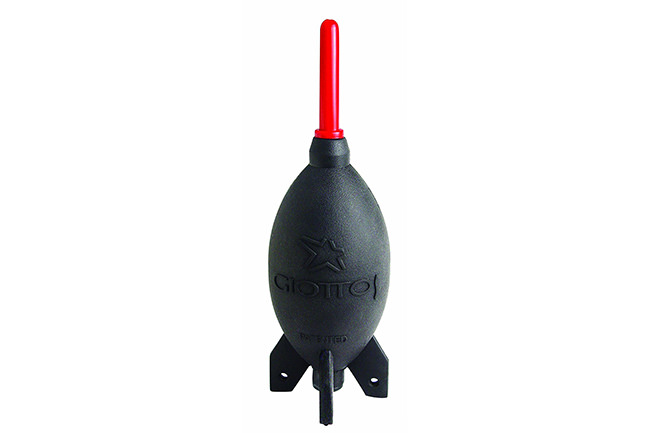
When you have dust on your sensor, the rocket should be the very first cleaning tool you pull out. If it does not remove all the dust, you will need to move to more drastic measures such as the Sensor Gel Stick or wet cleaning.
2.9) Sensor Gel Stick
Speaking of which, if you have never heard of the Sensor Gel Stick, it is time for you to check one out. If you are frustrated with all the residue and specks left by the wet cleaning method, or you are too scared to clean your own sensor, the Sensor Gel Stick can be a life saver. Tens of thousands of photographers are using this product and for a good reason – it is the best sensor cleaning product on the market.
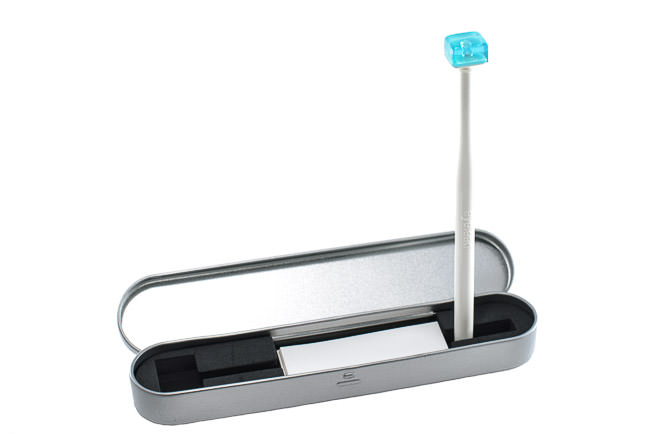
Make sure to get the correct version of the Sensor Gel Stick. For Nikon, Canon and Pentax cameras, make sure to get the regular version. For Sony, Leica and Fuji mirrorless cameras, you want to use the orange version. Unfortunately, we are currently out of stock on the orange version due to the release of a new version, but we are expecting to receive stock within the next 2 weeks.
2.9) Microfiber Cloth + Lens Cleaner
When traveling, you will need good quality microfiber cloth and a liquid solution to properly clean lenses and filters. My personal choice is the Zeiss Jumbo Microfiber Cloth + 2 Ounce Zeiss Optical Lens Spray Cleaner. Make sure to place the lens spray in a plastic container when going through airports.
2.10) Circular Filters + Step-Up Rings
Lastly, don’t forget about filters! Two filters I always take with me are B+W 77mm XS-Pro Circular Nano Polarizer and B+W 10-Stop ND Filter. The circular polarizer is a must-have for landscape and architecture photography (see how to use polarizing filters) and a 10 stop ND filter is needed when I want to photograph moving water (see lens filters explained). When using filters of different sizes, I often bring the Fotodiox step up ring pack, which allows me to use the above-mentioned filters with pretty much any lens.
3) Optional Accessories / Overseas Travel
Lastly, let’s take a look at optional accessories and other items that might be needed when traveling overseas.
3.1) USB Solar Charger Panel
If you are planning to go to remote areas with no power, you have to get yourself a USB solar charger panel. While the AUKEY battery pack with built-in solar panel mentioned above is wonderful, it takes a very long time to get it charged, since its solar panel is very small. If you want to be able to charge a battery pack or your devices much faster, you want to get the AUKEY 21W Dual USB Solar Charger. When opened up, the unit has a total of 3 large panels that can provide up to 2A output on each of its two USB ports when under direct sunlight. That’s enough power to be able to quickly charge your smartphone, in addition to a battery pack. It is water and weather resistant and it can take quite a bit of beating.
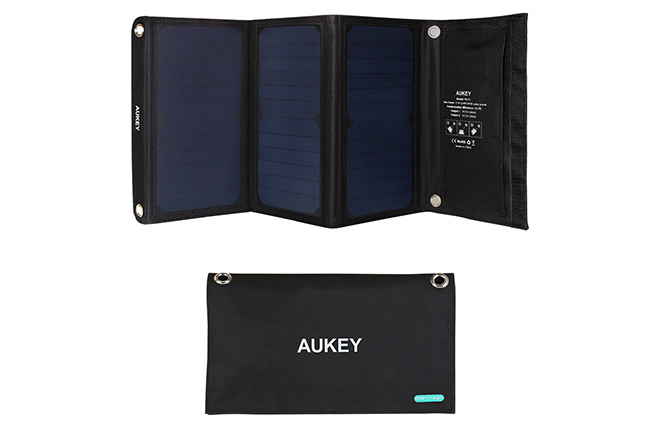
Best of all, you can literally open it up and tie it or clamp it to your backpack while hiking (the unit comes with 4x carabiners), allowing it to continuously charge your devices!
3.2) Multi-Port USB / USB C Port Charger
When I know that I will be staying in a hotel or traveling in my compact trailer, I also make sure to grab the AUKEY 4 Port USB Charger with USB C port. Just like the 4 Port USB Car charger, it is very compact (size of a credit card) and with its dedicated 2.4A output from each port, it has enough power to charge pretty much anything I throw at it, including a USB-C compatible device such as MacBook / MacBook Pro.
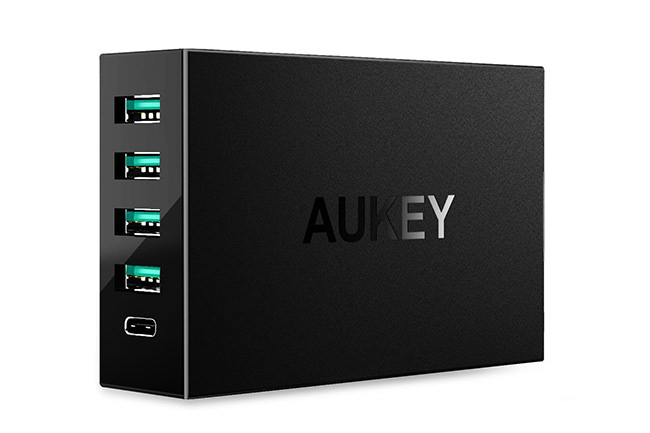
Similar to the other AUKEY devices, it comes with a respectable 24-month warranty and it has built-in safeguards to protect devices from excessive current, overheating and overcharging.
3.3) Orei World Travel Power Plug Adapter
When traveling overseas, you always want to make sure that you have a power plug adapter, so that you can plug in your chargers and your power cables into outlets. While there are lots of different adapters out there, the one I can recommend is the Orei World Travel Power Plug Adapter. It is good to use in most countries of the world and it has a pretty simple design that allows you to push any power connector out of the unit.
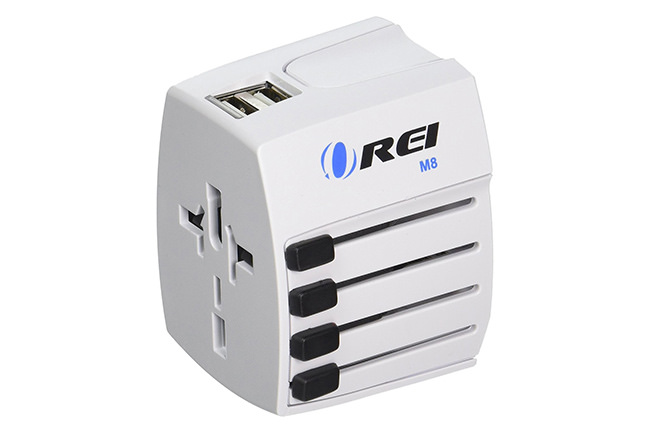
In addition, it has a built-in dual USB charger that can provide up to 2.1A of power, so you can charge up your mobile phone together with a battery pack. Not bad for something that will set you back at $25!
3.4) USB 3.0 Memory Card Reader
As you may already know, my favorite travel memory card reader is the Lexar Professional USB 3.0 Dual-Slot Reader (see my review).
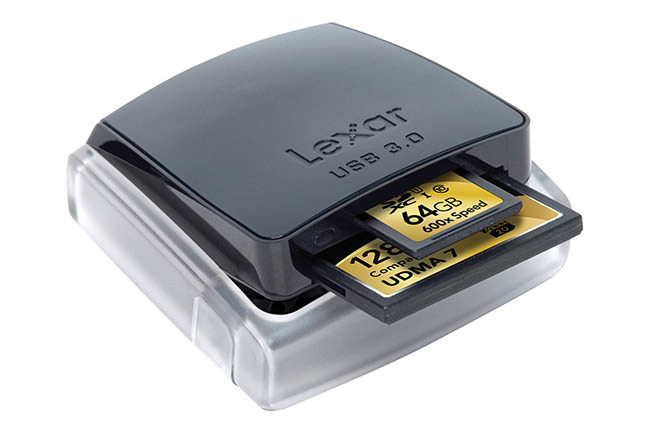
It is a bit pricey at $35, but trust me when I say that you need a reliable memory card reader that can truly take advantage of your fast memory cards! This guy can read both UHS-I and UHS-II SD memory cards and it is very small when collapsed, making it ideal for travel. If your laptop does not have a built-in SD memory card slot, or you shoot with CF cards, this is the best travel memory card reader on the market today.
3.5) Filter Set
We have written quite a bit about lens filters and why you need filters for landscape photography, so there is no need to add more to the subject. In short, if you are serious about landscape photography, you need to get yourself a reliable filter set that you can use in the field. I have used a number of different filter systems in the past and the one I currently rely on is the NiSi filter system.
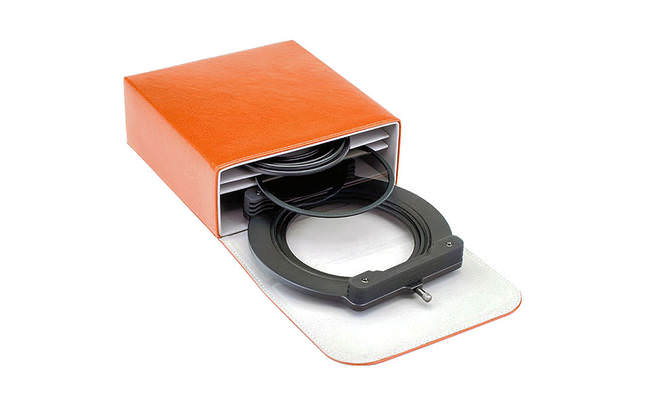
It is a great filter holder that is very easy to use and I prefer it to my older Lee filter holder. The only thing I don’t like about NiSi rectangular filters, is that their coating tends to easily scratch, so you need to make sure that you carry NiSi filters in their hard case and be very careful when using them in the field – you do not want to drop these or put them against any hard surface. Always make sure to clean glass filters with soft microfiber cloth and not your shirt or other material that might scratch the surface or the coatings!
3.6) Travel Tripod
For many years now, my favorite travel tripod has been the Gitzo Traveler Series 1 – it is a small, super lightweight (1 kg) and versatile tripod that is pretty close to being an ideal travel companion. However, its biggest issue is its thin legs, which can get shaky when putting heavier loads. It is also a pretty low tripod, which can make it a bit painful to use for extended periods of time. Still, when I need to travel super light and compact, I usually end up taking my Gitzo Traveler with me. Mine has been discontinued and replaced with the Gitzo GT1545T, which is as light and as small as mine, but has better overall construction.
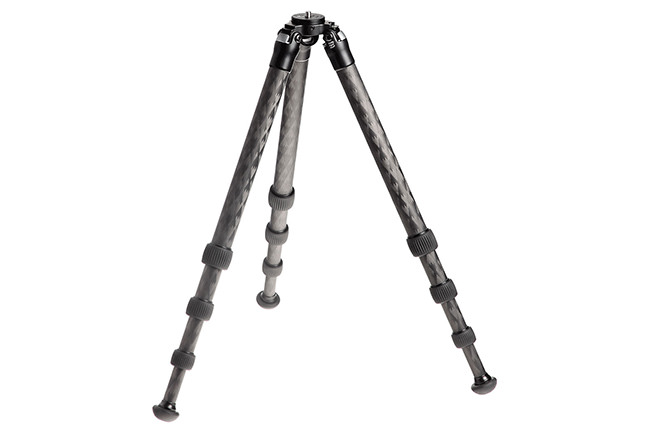
If you want something even more suitable for heavier loads when traveling, another great option is the Really Right Stuff TVC-24 Versa Series 2. It is slightly heavier than the Gitzo Traveler (1.4 kg) and larger, but it can take a lot more load – up to 18 kg of total weight. The RRS TVC-24 is pretty expensive though – just the legs will cost you $960, which is as much as a pretty nice camera! For this reason, it is definitely not for everyone.
If the above tripods are out of your budget, another potential choice would be the MeFOTO Carbon Fiber Globetrotter kit. At $350, it is a pretty good travel tripod that is fairly compact. It might not have the Gitzo or the RRS name on it, but for its price and its load capacity of 12 kg, it is of a great value. It is a bit heavier than the RRS and especially the Gitzo traveler, but keep in mind that it comes with an Arca-Swiss compatible ballhead. Personally, I am not a fan of the MeFOTO ballheads, but I will take one for free.
While at it, if you do get yourself solid tripod legs, you want to make sure to get a good tripod head as well. When using my Gitzo Traveler, the ballhead that permanently sits on it is the RRS BH-30. At $260, it is not a cheap ballhead, but it is very reliable and it has taken many years of abuse without any issues. My only complaint about the BH-30 is the large knob which can sometimes get in the way, but you can get around the problem by rotating the head a little. If you have a heavy DSLR or a medium format camera and you are looking for a perfect RRS TVC-24 tripod companion, you might want to take a look at the RRS BH-40. It is one of the best mid-size tripod ballheads on the market and with its 8.2 kg load capacity, you can safely mount quite a bit of gear on it. These things are built to last.
Just like tripod feet, there are many more tripod heads available on the market. My favorite has always been RRS, but you can find many more great options out there. For example, the Acratech Nomad is another great premium ballhead great for travel – at only 410 grams of weight and a load capacity of 11.3 kg, it can support more weight than the BH-40 and it has a pretty compact build.
I know that some of our readers might be pretty unhappy about me including such expensive tripods and ballheads in this list of gear and accessories for travel. However, as I have stated in my article on buying a tripod, don’t fool yourself into thinking that you can get a cheap and reliable tripod – there is no such thing. You pretty much always get what you pay for. If the tripod you are looking at costs less than $300, you will most likely end up replacing it in the future, and you can trust me on this one. You want a solid and lightweight carbon fiber legs, with construction made for abuse in the field. Cheap tripods can’t provide that and overtime things will be falling apart. Get yourself a solid tripod that will last you a lifetime and never look back.
3.7) Tabletop Tripod + Compact Head
While traveling, you will come across stunning places that prohibit the use of a full size tripod. In such cases, a very compact tabletop tripod could save the day, since it does not get in the way and you can safely use it in most environments. Last year I acquired the Really Right Stuff TFA-01 tabletop tripod with BH-25 ballhead and I must say, this is a very impressive mini tripod that can easily fit in your camera bag or your pocket. It can support quite a bit of weight for its size (the tripod head can support up to 4 kg and the legs can support up to 6.8 kg of total weight), so you can even mount a full-size DSLR with a long lens on it!
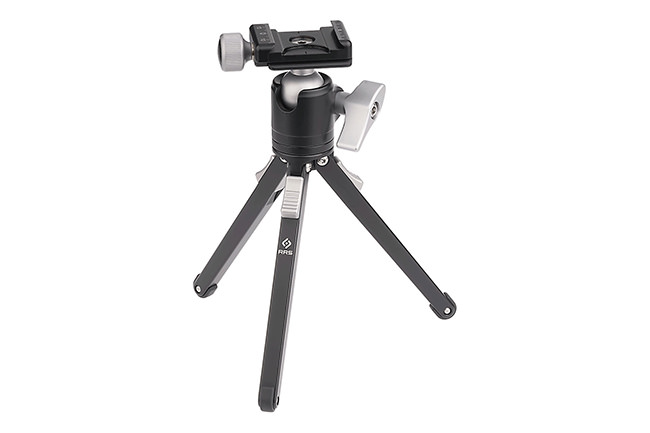
If you have an L-Bracket on your camera, I would suggest to get the more compact and lighter RRS TFA-01 with the BC-18 Microball. If you have regular plates, I would get the kit with the BH-25 as pictured above.
3.8) Multi Clamp Kit
Another amazing accessory that I take with me when traveling abroad is the RRS Multi-Clamp Kit with BC-18 Micro Ball. When I do not have a surface to put the tabletop tripod on, there is usually something I can attach a clamp to – whether it is a tree, a window frame or a fence. And that’s where the Multi-Clamp is most useful!
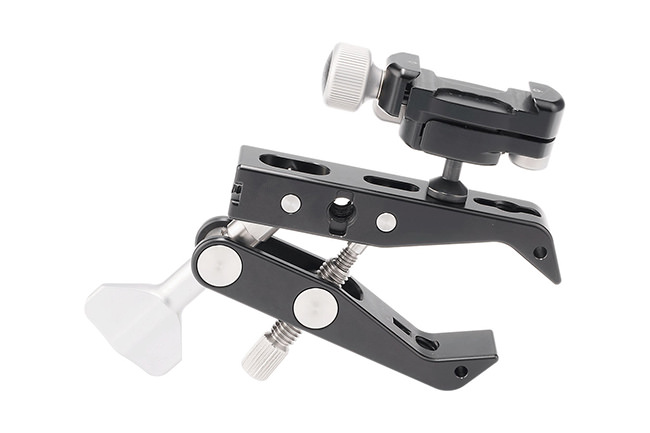
Just like the RRS tabletop tripod, the clamp takes very little space in my bag, so whether I end up using it or not, it is now always with me when I am abroad.
3.9) AA Rechargeable Batteries
When traveling locally, I usually take a 12-pack of rechargeable batteries with me. I can use them with my flashlight, headlight and if I am planning to use speedlights or other gear, they are very useful and less wasteful than alkaline batteries. If you want something simple and cheap, get the AmazonBasics AA High-Capacity Rechargeable Batteries. If you want the best of the best, especially if you are planning to use batteries in a speedlight, get the Panasonic Eneloop Pro Rechargeable Batteries. They are expensive, but worth the high price tag when it comes to fast recycle times and longevity.
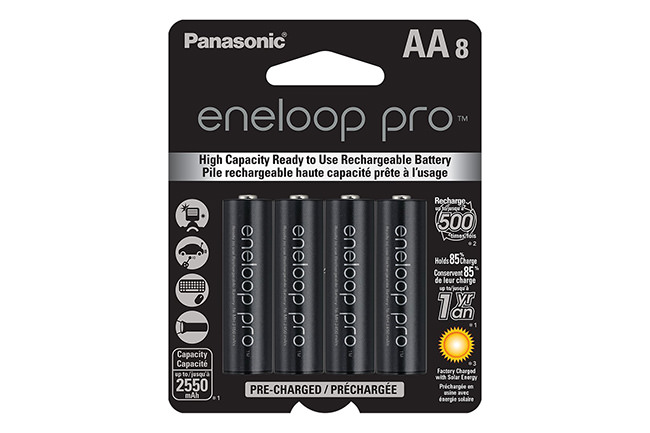
While at it, don’t forget the AA 12-Pack Battery Caddy. I place my batteries in the caddy when traveling. When a battery is used, I turn it the other way around and slide it right back. This way, I know which batteries are full and which ones need to be charged.
To make charging very quick, I also use the EBL 12-Bay LCD AA / AAA Battery charger. This bad boy can charge all 12 batteries at a time very quickly, so I never have to worry about batteries running out.
I normally don’t take any of this with me when traveling overseas due to weight and it is usually easier to grab Alkaline batteries in any country if I need them.
3.10) Unlocked Smartphone
I always make sure that I travel with an unlocked smartphone, so that I can buy a SIM card and use my phone for calls and Internet. Sometimes it is useful to travel with a small router like the TP-Link N150 that can take SIM cards, since not every carrier in other countries is going to allow you to share data from your smartphone.
When traveling overseas, don’t forget to add / consider other items such as passport, travel insurance, etc.
I hope you found this article useful. Let me know if I missed out on anything in the comments section below!